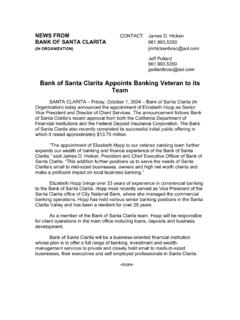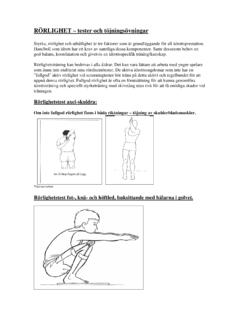Transcription of FNC-EH Engine Starting Guide - All New England …
1 HOPPECKE Batteries Inc 1960 Old Cuthbert Road, Suite 130. Cherry Hill, NJ 08034. phone: 856-616-0032 . fax: 856-616-0132. Diesel Engine Starting Batteries Guide and Worksheet Energie-H IGH POWER SERIES. HOPPECKE Advanced Fiber NICKEL CADMIUM Technology Designed for diesel Engine Starting applications Ultra High Discharge Performance Reduced Space and Weight Extreme Low Temperature Operation Extensive Cycle Life High Recharge Efficiency Complete Engine Starting System Packages Available (Battery, Charger, Racks). 1. SIZING METHODS AND SPECIFICATIONS. For the past few years a simplified method of battery battery cost. Where multi-viscosity oil is used, it is taken sizing has been applied to alkaline batteries for Engine at the lowest factor for the given temperature. Starting . This method allows you to select a conservative Cranking time, which is generally expressed as the battery which meets the parameters of the application number of 10 second start attempts, should be sufficient without unwarranted expense.
2 To allow for manual Starting after difficulty with any automatic system employed. The manufacturer's listing SIZING TECHNIQUE: in this Guide , and the battery selection inTable E, when The method of battery sizing applied here is based on the used without other factors, provides for 3 cranking cycles relationship between amperes at a given minimum of 10 seconds as a minimum. voltage and Engine cubic inch displacement. This Battery life, in the case of the FNC, is expected to be 20. relationship was established through the use of a formula 25 years, particularly in this application. Life is where Starting RPM, torque, and efficiency were generally measured in capacity not performance, and the calculated to the wattage required to start the Engine . end of useful life is considered to be when the battery has Additionally, coefficients have been developed for the 80% of its initial capacity. This measurement is based on various conditions which may exist in an application, tradition rather than fact, and developed since many lead such as battery electrolyte temperature, oil viscosity and acid batteries fail quickly once they reach 80% capacity.
3 Cranking time. The same is not true of alkaline systems, where capacity loss is effectively linear well below the 80% level. You POWER VS. CAPACITY: may wish to add a factor, in terms of performance not Ampere hours, the general measurement of battery capacity, for the life expected of this particular system. capacity over some number of hours, are irrelevant in power applications such as Engine Starting . Voltage NOTE TO THE ENGINEER: stability at high currents varies greatly among the many Frequently specifications for generator sets do not specify different chemical and mechanical battery types. In batteries by their type or construction, but in somewhat cranking applications, the ability to supply amperes for general terms of ampere hours, voltage and initial ability 30 seconds is not guaranteed by a quantity of ampere to crank the Engine . As a resul, many crucial and hours at the 5, 8 or 20 hour rate. In addition, each battery expensive installations are started by automotive cranking type responds differently in terms of performance at batteries.
4 There are applications where this is satisfactory, various temperatures. The FNC battery, particularly the and relatively short life on float service for the battery is X series, provides more than twice the amperes for 30 acceptable. However, in applications where an Engine seconds of any other alkaline system on the market, standby system expense is cost justified,it seems prudent relative to its ampere hour capacity. to assure the Starting capacity over the life of the system. A 1 3 year battery life, with intermittent periods of ITEMS TO SPECIFY: concern, may not meet the overall system requirements. In addition to the Engine model, cubic inch displacement This is even more obvious when translated to potentially and Starting system voltage, the battery manufacturer life threatening situations of emergency power systems. must know the following: Fire pumps, process controls, emergency lighting, to The minimum battery electrolyte temperature mention a few, always justify a system.
5 And that system The total cranking time (or number of 10 second must be assured of Starting power. HOPPECKE, of attempts) course, wants you to specify our FNC product for all The lowest Engine temperature critical applications, but what we ask is that you always The Engine oil viscosity specify a battery by type, construction, chemistry or classification, to assure you receive a battery which Battery electrolyte temperature is not necessarily as meets your requirements and expectations. low as the minimum ambient temperature, since the electrolyte temperature changes at a slower rate. STANDARDS: The following standards require special However, temperature has a large effect on battery consideration: performance, and must always be considered. Engine oil viscosity and temperature are also major NFPA-20, CENTRIFICAL FIRE PUMPS. factors. As oil heaters are relatively inexpensive, they should be considered to reduce NFPA-76A, ESSENTIAL ELECTRIAL SYSTEMS FOR. HEALTH CARE FACILITIES.
6 2. SIZING METHODS AND SPECIFICATIONS. SAMPLE SPECIFICATION: SIZING REQUIREMENTS: The Engine Starting battery supplied shall be nickel cadmium, alkaline electrolyte system, designed for extra high rate discharge and performance, and electrically The following information should be sized to perform the below specified Starting cycle for a supplied to aid in the sizing of the battery: period of at least 25 years. It is to have minimum internal resistance, welded construction, and be at least 80% 1. Engine Manufacturer & Model efficient on recharge. 2. Cubic Inch displacement of Engine The battery must be designed for float / standby service without excessive maintenance such as electrolyte 3. Battery System Voltage replacement, while being capable of 1500 or more full 4. Minimum battery electrolyte discharges with less than 10% loss of capacity. temperature. Cells must be individual, translucent containers to 5. Engine Oil Temperature (If block facilitate simple observation of the electrolyte level and heaters are used, specify heater set serviceability, with the electrolyte level minimum clearly marked.)
7 All inter cell connectors and inter-row connector temperature cables must be sized for the maximum current draw of 6. Number of 10 second cranking the Engine to assure minimal voltge drop during the cycles cranking cycle. The cells shall have the power and life characteristics of the FNC Xtra high rate type, or be an approved equal. BATTERY CHARGING. The most common cause of performance failure in Below are recommendations for typical applications: batteries is improper adjustment or operation of the 1. No Continuous Load recharge time not critical battery charger. The charger, representing about 5% of Ampere rating the system cost, must be specified in as much detail as the 2. No Continuous Load recharge in 24 hrs battery. It shouldbe as automatic as possible, with Ampere rating essential equipment and factory settings specified as well. Float = ; High rate = 3. Continuous Loads recharge 8-24 hrs FNC Battery Recharge Amperes plus constant load Float = ; High rate = Vmax / number of cells All batteries recharge relative to time, current available, maximum voltage and battery efficiency.
8 The FNC is HOPPECKE recommends a two rate charger to assure 83% efficient, 13% better than pocket plate nickel full and fast recharge after a battery discharge. Single rate cadmium cells at 70%. The FNC requires less power, and charging requires factory recommended voltage settings given the same circumstances, recharges faster. FNC and specification review. Fully automatic transfer to batteries may be charged at extremely high currents, up to high rate charge (not to be confused with automatic 6 times their ampere hour rating, while remaining very voltage control) is highly recommended and available efficient on recharge. Effectively, 80% of their capacity from most manufacturers. Voltage regulations should be can be replaced in minutes when high current is available better than 1% (1/2% is readily available). Other for recharge. equipment, usually optional, such as low charger voltage, and high charger voltage alarms are suggested in Recommended Charging: installations where central monitoring exists.
9 We prefer and recommend a minimal charger ampere rating of (10% of battery AH capacity), always in addition to any constant load. This will allow recharge in approximately 24 hours. Voltage settings on float should be between volts per cell (vpc) and vpc; on high rate from vpc to vpc as a practical limit. Within these limits long service intervals can be maintained. 3. Engine Starting BATTERY SELECTION Guide & WORKSHEET. Step 1: Find the Cubic Inch Displacement (CID): _____. Of the Engine Determine the Starting Voltage of the _____. Engine (12 VDC, 24 VDC, 32 VDC). Step 2: Convert Engine Cubic Inch Displacement _____(Amps). To Starting Amperes (standard conditions). (TABLE A). Step 3: Determine the Lowest Battery Electrolyte _____. Temperature (TABLE B Factor F1). Step 4: Determine the Oil Viscosity Weight and _____. Temperature (TABLE C Factor F2). Step 5: Determine the Total Cranking Time _____. (minus rest periods) (TABLE D Factor F3). Step 6: Multiply Factors X Starting Amps _____(Amps).
10 (Step 2 x F1 x F2 x F3). Step 7: For dual Starting motors increase _____(Amps). Current by 10% (X ). Step 8: Select Cell Type and Quantity based _____. on Step 6. (TABLE E). Step 9: Select Rack Type and Model (TABLE F) _____. Standard Starting Conditions: 30 Seconds total cranking time 70 deg F Battery electrolyte temperature multi-weight oil at 70 deg F. vpc Engine breakaway voltage vpc Engine rolling voltage Some Engine controls may require higher breakaway voltage ( , ). Please consult Hoppecke for sizing. 4. TABLE A. Displacement Amperes Amperes Amperes Cubic Inches 12 VDC 24 VDC 32 VDC. 50 135 67. 100 200 100 Diesel Engine Starting 150 255 128 Battery Guide & Worksheet 200 322 161. 250 380 190 TABLE B Battery Temp. (Factor F1). 300 422 211 Battery Battery Factor 350 465 233 Temperature Temperature F1. 400 516 258 Degree C Degree F. 450 548 274. 500 587 294 21 70 550 631 316 16 60 600 674 337 10 50 650 702 351 4 40 700 729 365 0 32 750 772 386 -7 20 800 814 407 -12 10 850 858 429 -18 0 900 901 452 -23 -10 950 947 474 -26 -15 1000 993 497 -29 -20 1100 525 405.
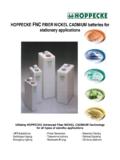

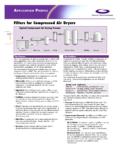
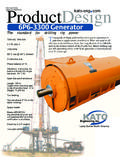
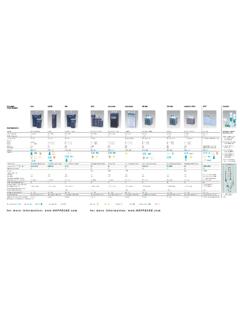
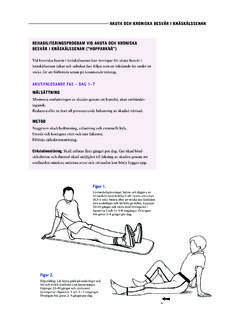
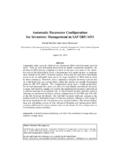
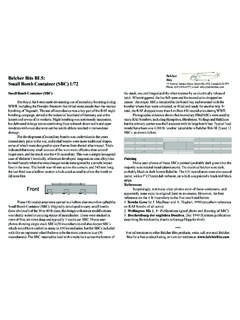
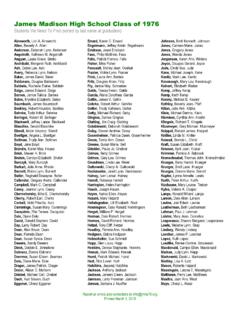
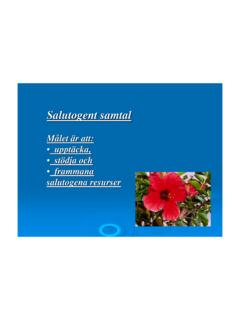
![Untitled-1 [www.the3c.in]](/cache/preview/1/5/8/8/c/7/4/c/thumb-1588c74c96d4a2bd8fd1bdf85635dd94.jpg)
